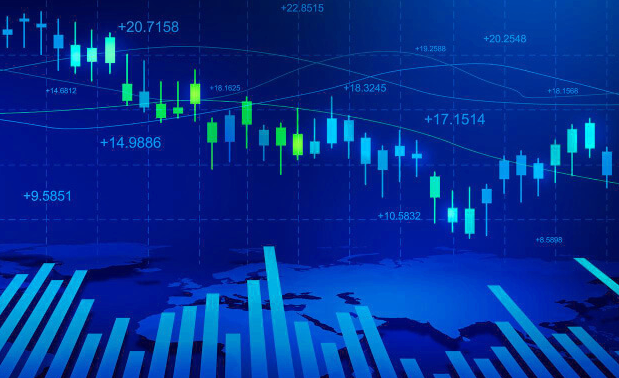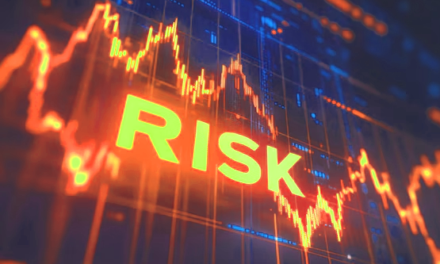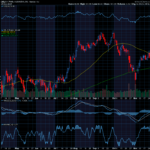by Jea Yu
We have all failed. No one is excluded.
The journey is about coming to terms with the truth. The vast majority of traders ultimately blow out. You have most likely blown out once, twice, or more. The reality is that trading is getting ever more difficult as markets get more so-called efficient.
So with the odds against you, why do you keep coming back? The fact that you are still coming back is the key testament to your willingness to be in the 1% of traders who are consistently profitable.
The journey of achieving a “full circle” requires failure. It is only through these failures that we can learn. Learning in its purest form is error driven. The greater the magnitude of failure, the more quickly we learn.
Full circle means failing and coming back to evolve. Failure gives you a different perspective, if you pay attention. A full circle is a revolution; a completion without gaps, starting from one point and ending back at that point. The start and the end are the same; however, the significance lies in the journey undertaken to arrive at that destination.

The human component is imperfect. Humans can not compete against the efficiency of a machine. However, humans can adapt and out think, as long as they protect their flaws from being exposed. The purpose of the markets is to exploit inefficiencies. This is the constant cat and mouse game that defines the market action. As much as this may sound psychological, the remedies come in physical form.
The theme is the achievement of going full circle, which means the completion of a journey. A circle is void of gaps. It characterizes clarity, completion, and most importantly, closure. The end point is identical to the starting point, ironically. Once a trader exhausts his efforts to find the “holy grail”, and often blows out his account in the process, that is when the full circle effect materializes. The trader comes to the understanding that the reason for his failure was the execution of the game plan, not the game plan itself. Once a trader understands and embraces this thinking, he is ready to move forward.
So much has been focused on various methods, patterns and setups to the point of total exhaustion. A void has materialized in the market education space. The underlying theme has always been to find transparency before it becomes too transparent. The market is not only a zero sum ponzi game, but indiscriminative when it punishes – generous at times, and merciless at its worst. Everyone understands the markets are dynamic, yet most management systems are static, thereby causing the distortion in the results.
Why is it when a trader follows methods to a tee, he tends to make nice profits during one week and then gets splattered the following week? When this happens, the trader will conclude that the methods need further tweaking and will search out other models and setups. He may be profitable for another week or two, and then get slammed the following week. Once again, he comes to the conclusion that the methods are at fault and again tries to tweak them. He will also spend time back-testing the setups and methods. The trader may continue this process relentlessly for months on end, only to end up with further losses. Every time the he goes through a winning phase, he is relieved into thinking he has finally found the right combination, only to have the rug pulled when he goes into a losing period again. This is an endless cycle that eventually concludes with the trader voluntarily quitting, or blowing out his account.
This is the standard evolutionary cycle of a trader. Having catered to over 10,000 traders worldwide over the past decade, I have been in a privileged position to intimately witness this phenomenon unfold for a vast majority of traders. I too have questioned why the methods can be so effective, with pinpoint accuracy at times, while being ambiguous and blurry at other times. The one factor that all too many traders tend to leave out when developing methods and back-testing is the very fact that markets are dynamic, not static. Most people tend to naively believe that markets are consistent; that they will repeat themselves in a predictable manner, and will follow time-tested static patterns. Or, they will apply dynamic methods while unconsciously assuming a static market in the background.
When a consistent method or system is discovered and applied successfully in real time, it is rarely the system that needs adjustment. The real adjustment lies in what environment that particular system can most effectively be implemented. In other words, the markets themselves play a larger role in the success of any method than the method itself. The newer, more “efficient” computer program-dominated markets prey upon the less efficient participants. This cannibalism is the same paradigm on a new scale. If you have flaws, the market will exploit them. In fact, the market will give you the rope to hang yourself. Therefore, traders need to start by galvanizing themselves before taking part in the game of trading.
Using Failure as a Growth Tool
Sun Tzu, the author of The Art of War, once advised a Chinese emperor during a war to pit his small army, outnumbered 10 to 1, directly into their path of destruction, guaranteeing absolutely no escape and even less chance for survival. His small army had no choice but to fight to the death. An amazing thing happened… When put with their backs against the wall, the men, having nothing to lose, fought with a ferocity unseen and emerged victorious.
Strip a person of all inessentials and take him to the edge of the abyss, and you will find that that is when they learn the most about themselves. They say the brain feeds on failure. The more wrong you are, the quicker you learn. When you expect failure that is when you are most prepared for it. When you have already tasted failure, it becomes familiar enough to prepare for it. In this preparation is how you avoid it.
When failure is anticipated, it immediately focuses us to prepare. Learning from failure can only be accomplished when we fail more efficiently. There are two ways to accomplish this:
Soften the Blow – In trading, this means lower your downside risk by minimizing the share size to a point where the maximum loss is insignificant. The key word here is to minimize the potential damage.
Scale Down Expectations Preemptively – It is human nature and a misnomer that once you succeed, you need to step it up and push harder. This is one of the key missteps in trading that can turn a small profit in the morning into a large loss by the end of the day. It is very hard to scale down expectations in the heat of the battle, especially during a losing session. This is why it must be done preemptively. A key word that will be a cornerstone in your trading is scale. Scaling means to measure, adjust, and calibrate to attain the right balance. Scaling your risk. Scaling your shares. Scaling your allocation. Scaling your charts. Scaling your progress.










Recent Comments